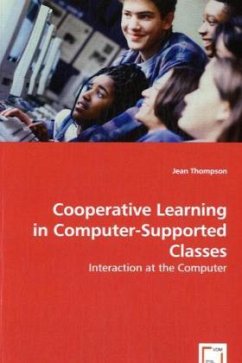Recent views of learning emphasise the social and situatednature of the construction of knowledge. Learning is seen to bemediated by the individual's active involvement and participationin situated social practices and not as the result of knowledgetransmission. Consequently interest in the sociocultural views ofVygotsky has brought the issue of social interaction andcooperative and collaborative learning to the centre of educationreform. Of interest is the question of whether cooperative learningwith computers encourages learning as a group as opposed tolearning in a group. This book emphasises the importance ofteachers using cooperative learning as a structure to enablestudents to think together. Four case studies are analysed usingJohnson and Johnson's essential elements: positive interdependence,individual accountability, group processing and group composition.Of particular importance is the role of talk when students areengaged with computers. The analysis should enhance understandingof interaction at the computer and should be especially useful toteachers and educators in their task of scaffoldinglearning.
Bitte wählen Sie Ihr Anliegen aus.
Rechnungen
Retourenschein anfordern
Bestellstatus
Storno








